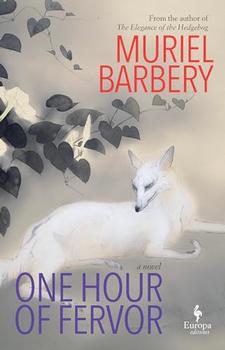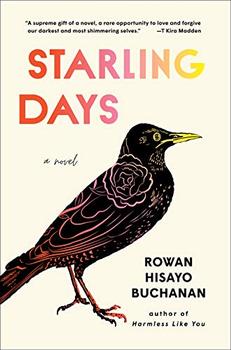Summary | Excerpt | Reviews | Beyond the book | Read-Alikes | Genres & Themes | Author Bio

Our unnamed narrator is a young French-Korean woman who works at a guest house in Sokcho, a popular tourist spot that lies on the border between South and North Korea. Kerrand, a French graphic novelist, has come to stay at the guest house during the quiet winter season, hoping to find inspiration for his latest project. Each an outsider in their own way, the two form an unconventional bond as they explore the surrounding landscape together. This connection pushes both to ask themselves important questions about what they want from life.
Though ostensibly an off-beat romance, this is no sweeping love story. The author forgoes high drama in favor of something much more subtle; the true significance of the characters' interactions is often found in what is left unsaid. This is reflected in the prose itself, which feels very stripped back. Short, staccato sentences propel the story forward with the brevity and momentum of a journal entry. There is a deceptive amount of skill on show, however. Dusapin achieves much with little, conjuring the sights, smells, sounds, and tastes of Sokcho to great effect, making for a surprisingly evocative reading experience.
The primary theme that runs throughout is the idea of facades that mask a truth we would rather not confront. Most prominently we have the discrepancy between the way outsiders choose to see a place, versus the reality lived by its native population. Tourists flock to Sokcho in the summer for its bright neon lights and pretty beaches, oblivious to the barbed wire, armed guards and heavy artillery that linger on the periphery. These are a constant reminder to locals of the ongoing threat from the North, but as our heroine endeavors to show Kerrand the Sokcho in which she was born and raised, she soon sees that he is no different in prioritizing ease over truth. Indeed, he turns his back on the battle scars that mark the impact of war to frame a prettier snapshot, and would sooner get food from the nearby Dunkin' Donuts than sample authentic dishes from the local fish market.
The theme is picked up again in repeated mentions of the growing trend for Koreans to seek out cosmetic surgery in pursuit of aesthetic "perfection." Our narrator is not immune to this pressure; she has her own bodily insecurities, not helped by her mother's regular urges to go under the knife. Her boyfriend, a budding model, is already contemplating this route himself, and their relationship is built on a brand of comfort and convenience that masks discontent.
It is possible that some readers will find Winter in Sokcho too understated; the consistent pacing and downplayed emotional delivery mean some potential depth and impact go untapped. The bittersweet conclusion feels in keeping with the novel's overall tone and approach, however. Dusapin says just enough to hint at the profound impact the characters have had on each other, while leaving room for both to continue exploring their identities beyond the page. It is no coincidence, after all, that our narrator remains nameless throughout. Perhaps, by the novel's end, she is one step closer to deciding who she wants to be and forging her own path in life, to making peace with her mixed-race heritage and the pressures that come with being a woman in present-day South Korea.
![]() This review
first ran in the May 5, 2021
issue of BookBrowse Recommends.
This review
first ran in the May 5, 2021
issue of BookBrowse Recommends.

If you liked Winter in Sokcho, try these:

by Muriel Barbery
Published 2024
From the best-selling author of The Elegance of the Hedgehog comes a family story with a difference, a novel about the decisions one makes and the destiny they determine by one of Europe's most brilliant and stylistically subtle authors.

by Rowan Hisayo Buchanan
Published 2021
The moving new novel by the author of Harmless Like You, a New York Times Book Review Editors' Choice and NPR Great Read.
It is a fact of life that any discourse...will always please if it is five minutes shorter than people expect
Click Here to find out who said this, as well as discovering other famous literary quotes!
Your guide toexceptional books
BookBrowse seeks out and recommends the best in contemporary fiction and nonfiction—books that not only engage and entertain but also deepen our understanding of ourselves and the world around us.